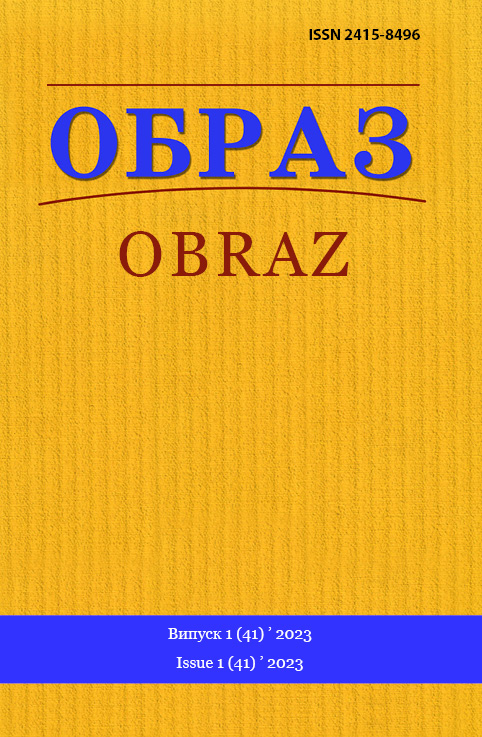Abstract
Introduction. Ukrainian society suffers from aggressive information influences. Information attacks traditionally increase before elections in Ukraine, when citizens receive and consume masses of information. Presentation of information about the candidate ensures the voter’s right to objective, comprehensive and impartial information, defined by the Election Code.Relevance of the study. The relevance of the study is determined by the need for a detailed analysis of aspects of informing voters about political candidates at the regional level.
Methodology. The main research method was content analysis, during which 9 programs were studied. The method of description made it possible to outline all the aspects of each of the program releases obtained as a result of the content analysis. Differences in formats and thematic direction of programs were determined by the method of comparison. The method of systematization made it possible to organize the results obtained during the research, the method of generalization – to draw meaningful conclusions of scientific intelligence.
Results. In order to present to the electorate the candidates for the post of mayors of Uzhgorod, Sumy and Chernivtsi, the regional branches of Public broadcaster prepared and aired 12 programs: 9 issues of the project «Electoral district. Local» and 3 – «Electoral district. Debate».The content analysis showed that the programs of all branches contained the following structural components: a videocard of the candidate, self-presentation, questions from the editors of the public, questions from community residents. The programs of the Zakarpattia branch received the fewest views on YouTube video hosting, from 173 to 1090 views. The most are the information products of the Bukovyna broadcaster: one of the releases was viewed by more than 12,000 users.
Conclusions. «Electoral district. Local» and «Electoral district. Debates» became the first projects of regional television, which systematically and in detail provided viewers with information about the candidates, their programs and created a platform for discussion between politicians. We consider the study of discussion programs and other formats implemented by regional branches of the public broadcaster of Ukraine to be promising.
References
1. Bohdanov, A. (2019), «Peculiarities of campaigning in the presidential elections of Ukraine in the early 1990s», Naukovyj visnyk Uzhghorodsjkogho universytetu [Scientific Bulletin of Uzhgorod University], Іss. 1, рр. 17–26.
2. Verkhovna Rada of Ukraine (2022), The Electoral Code of Ukraine, available at: https://zakon. rada.gov.ua/laws/show/396-20#Text (accessed 13 September 2022).
3. Hresko, O. (2015), «Television debates as a form of social communications», Visnyk Ljvivsjkogho universytetu [Lviv University Bulletin], Іss. 40, рр. 199–207.
4. Dutsyk, D. (2001), «Mass media as a means of communication between society and the state», Nova polityka [New policy], Іss. 34, рр. 11-14
5. Kovalenko, R. (2016), «Classification of TV debates in the presidential elections of Ukraine (the experience of the USA)», Verkhovenstvo prava ta pravova derzhava [The rule of law and the rule of law], рр. 43–45.
6. Kovalova, T. & Yevtushenko, O. (2022), «Оvercoming the challenges of post-truth in modern socio-cultural communication», Obraz [Image], Iss. 1 (38), pp. 112–119, available at: https://obraz.sumdu.edu.ua/wp-content/uploads/2022/06/11_Kovalova_Yevtushenko_38.pdf (accessed 6 June 2022).
7. Center for Democracy and Rule of Law (2019), «Political debate is a discussion that decides the fate of the state», available at: https://cedem.org.ua/analytics/politychni-debaty/ (accessed 10 September 2022).
8. Stankevych, B. (2008), «The role of television as an effective information resource during the presidential elections of Ukraine», Ukrajinsjka nacionaljna ideja: realiji ta perspektyvy rozvytku: zbirnyk naukovykh pracj [Ukrainian national idea: realities and prospects of development: a collection of scientific works], Іss. 22, рр. 94–99.
9. Suspilne media (2017), «Development strategy of Public broadcasting», available at: https:// www.nrada.gov.ua/wp-content/uploads/2018/04/strategiia_rozvytku_NSTU.pdf (accessed 15 September 2022).
10. Shalman, T. (2014), «Current Debates in the Sociology of Journalism on Brian McNair’s UK News and Journalism», Informacijne suspiljstvo [Information society], Іss. 20, рр. 105–109.
11. Shcherba, H. & Sazonova, Y. (2022), «Tokshou «Vyborchyjokrugh. Debaty» Suspiljnogho movnyka Ljvivshhyny jak poserednyk komunikaciji mizh vladoju ta suspiljstvom: strukturnotypologhichnyj i kontent-analiz», Visnyk knyzhkovoji palaty [Bulletin of the Book Chamber], Іss. 4, рр. 27–35.
12. Suspilne media (2021), «Annual (general) activity report of Public broadcasting for 2020», available at: https://www.nrada.gov.ua/wp-content/uploads/2021/02/SHHorichnyj-zvit-AT-NSTU-2020. pdf (accessed 17 September 2022).

This work is licensed under a Creative Commons Attribution 4.0 International License.

